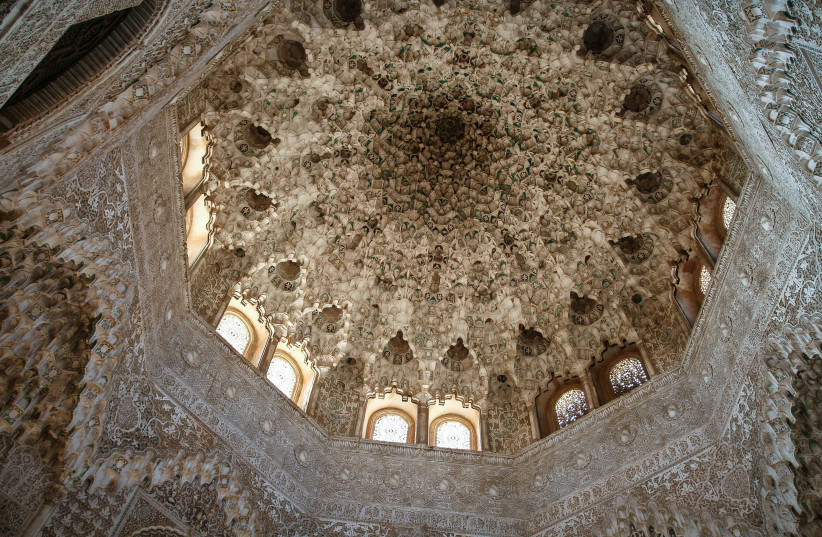Gold is a famously chemically inert, easy-to-work metal that maintains its shape and luster for centuries if cared for properly. However, gold alloys may suffer degradation over time in certain circumstances. A recent study by the University of Granada in Spain published in the peer-reviewed journal, Science, explains how the gilded tin plasterwork in Granada's Alhambra spontaneously turned purple.
The Alhambra, now a United Nations Educational, Scientific and Cultural Organization (UNESCO) world heritage site, is a fortress and palace built in the 13th century under the Islamic rule of Spain. The complex was intricately decorated in a wide variety of media and was preserved quite well over time despite changing hands and being left to squatters in later centuries.
Despite its many useful qualities, thin gold leaf used for fine detailed work does not have enough structural integrity on its own for use in heavy-duty structures like the Alhambra Palace. Tin offers the gold a thicker support and, according to the study, despite its high cost, was much easier to work with. The question was - why did it turn purple? Art historians and conservationists have been aware of this phenomenon for some time, but its catalyst was a mystery.
Getting to the bottom of the purple enigma
Researchers closely analyzed plasterwork in sites within the Alhambra that received water runoff and condensation; thus, they identified how an abnormal pattern of corrosion corrupted the surface of the imperfectly bonded gold-tin mixture over time.
"Damaged gilded tin is found on plasterworks in (semi)-open areas of the Alhambra palaces at runoff/water condensation sites. Here, most of the gilding is lost and remains show gray-black, golden, or whitish color displaying an odd purple shade," wrote study authors Carolina Cardell and Isabel Guerra.

"Examination with a stereomicroscope (SM) and a polarized light microscope (PLM) of bulk and cross-section samples displays the structure and features of the decoration," wrote researchers. "The sequence of layers, described from interior to surface, is as follows. The gray-black color points to a porous corroded nonuniform metal foil...The golden color is due to a friable metallic yellow leaf...that contains fissures, flakes, and rough/rounded voids.
"Next, as shown by SM, remnants appear as an iridescent metallic purple shiny covering, which is seen as a tiny grayish film under PLM. At the surface, a purple-tinted whitish coat with spongy texture is found."
“The results shown here hopefully will help experts of ancient gilded objects with the information relevant to corrosion methods and materials of intervention, as well as corrosion prevention,” concluded the study's authors.
